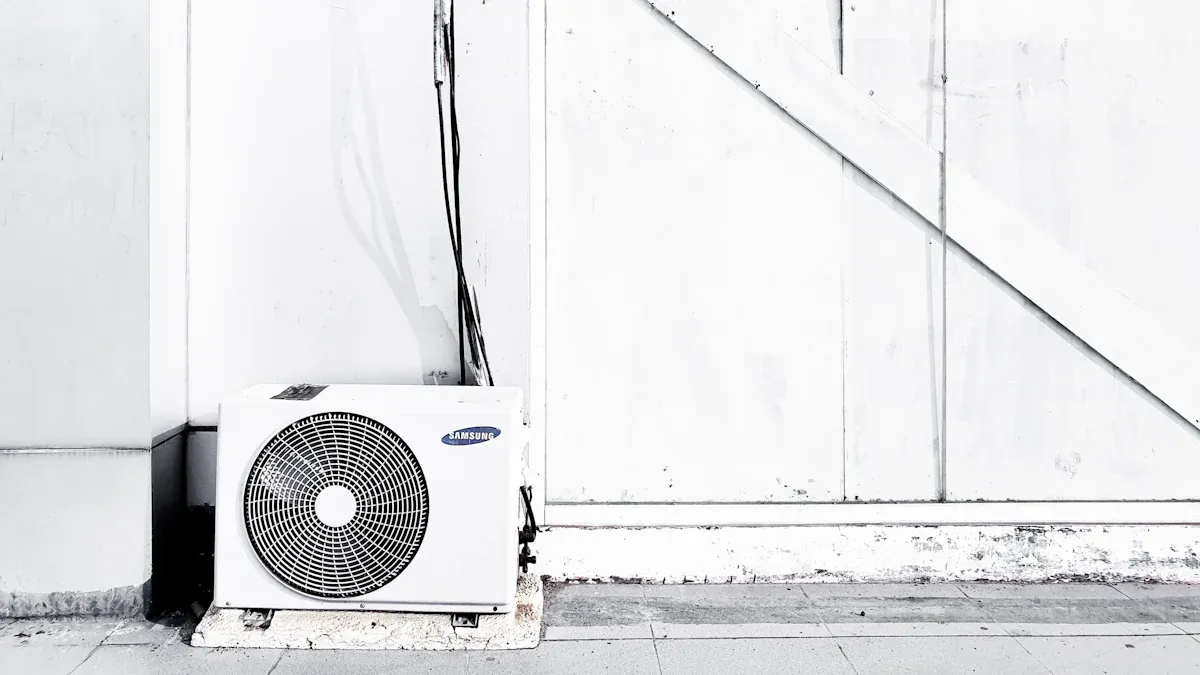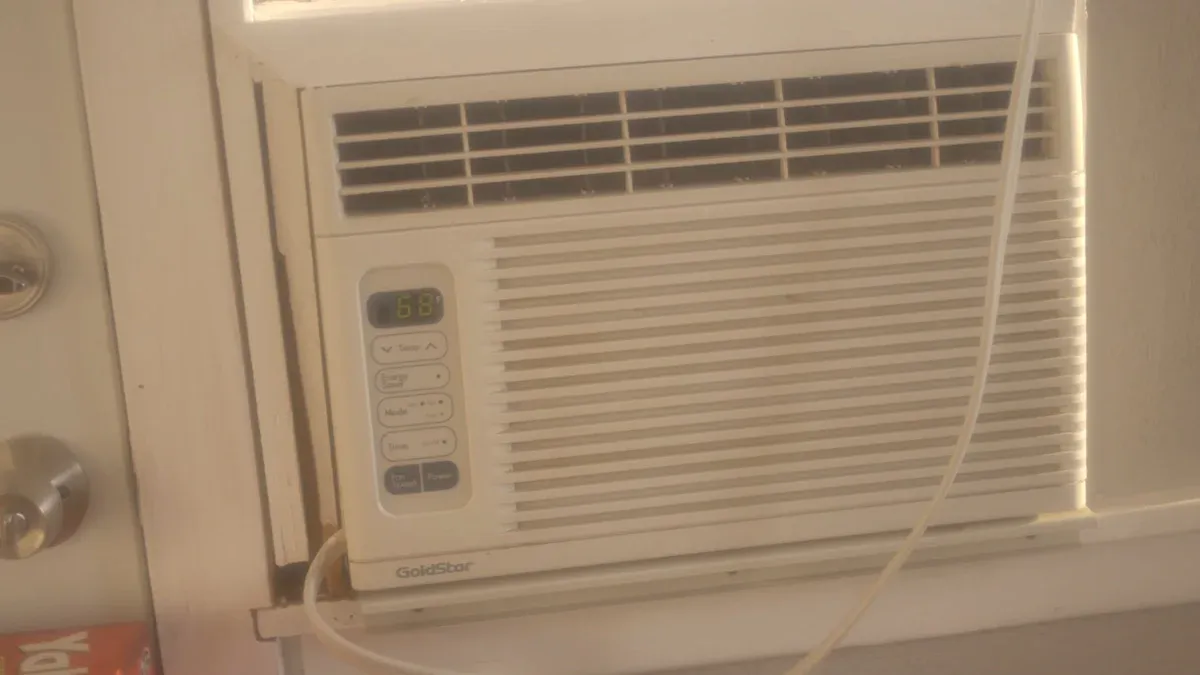Easy Tips to Install a Line Set Cover

A line set cover for air conditioners keeps things tidy. It protects the refrigerant lines from weather, dirt, and damage. This helps your system work better and last longer. Also, it makes your home look nicer. Don’t stress—installing it is easy for everyone to do.
Key Takeaways
Measure carefully before cutting. Correct measurements help it fit well and avoid errors.
Use weatherproof caulking to seal edges. This keeps water, dirt, and bugs out, protecting your HVAC system.
Check and clean your line set cover often. This keeps it working well and helps your HVAC system last longer.
Tools and Materials for Installing Line Set Covers

Tools You’ll Need
Get your tools ready before starting the job. The right tools make work easier and faster. Here’s what you’ll need:
Use a measuring tape to measure correctly.
A hacksaw or PVC cutter trims covers to fit.
A power drill with screws secures the covers in place.
A level helps keep everything straight.
A screwdriver tightens screws properly.
You can buy these tools at most hardware stores if you don’t have them.
Materials You’ll Use
Now, let’s look at the materials. These are the parts needed for your line cover system:
Part | Amount |
|---|---|
Straight tube cover | |
Basic connectors | 3 |
Flexible joint cover | 1 |
Wall hood cover | 1 |
Corner elbow connector | 1 |
90-degree bend connector | 1 |
Fastening hardware | 1 |
These parts help create a strong and neat setup. You can buy them as a kit or separately, depending on what you need.
Extras for a Better Look
Want your line covers to look even better? Try these optional items:
Paint that matches your house for a clean look.
Caulking seals gaps and keeps out weather.
Cable ties keep lines tidy and in place.
These extras aren’t required but can improve how your project looks in the end.
Step-by-Step Guide to Installing a Line Set Cover for Air Conditioners
Step 1: Measure and plan the layout
Start by planning your work carefully. Good measurements make installation easier. Use a measuring tape to check the length and path of the line set cover. Include bends, corners, and obstacles in your plan.
Here’s a simple table to explain measurement accuracy:
Metric | Description |
|---|---|
Average horizontal accuracy | How close horizontal measurements are to the actual size. |
Average vertical accuracy | How close vertical measurements are to the actual size. |
Number of positions averaged | The number of points used to find average accuracy. |
Standard deviation | Shows how much measurements differ from the average. High numbers mean bigger differences. |
Worst horizontal accuracy | The least accurate horizontal measurement taken. |
Worst vertical accuracy | The least accurate vertical measurement taken. |
Worst fix type | The least reliable GPS fix recorded. |
Number of manual locations | The number of times locations were manually added or adjusted. |
Take your time here. A good plan ensures the line set cover fits your HVAC system perfectly.
Step 2: Cut the line set cover to size
After measuring, cut the line set cover to the right size. Be precise when cutting. Follow these tips for better results:
Use sharp tools like a marking knife for clean cuts.
Mark measurements clearly with tick marks or story sticks.
Double-check measurements before cutting to avoid mistakes.
Use templates or jigs for consistent cuts, especially for repeats.
A hacksaw or PVC cutter works well for cutting. Smooth the edges after cutting to make sure the cover fits tightly.
Step 3: Attach the base of the line set cover
Secure the base of the line set cover to the wall. Use screws and a power drill to hold it firmly. Check that the base is level to prevent misalignment. If the surface is uneven, use shims to make it flat.
Pro Tip: Use a level to check alignment often. This avoids mistakes later.
Step 4: Secure the line set and drain line
Place the mini split line set and drain line into the base. Use cable ties to keep them neat and secure. Support the pipes to stop sagging, which can cause drainage problems. Make sure the drain line slopes slightly—about one-quarter inch per foot—for good water flow.
Reminder: Follow local rules and manufacturer advice for hanger spacing. This keeps the installation safe and correct.
Step 5: Snap on the top cover
Snap the top cover onto the base. Align it carefully and press until it clicks into place. Add connectors for corners or bends now to finish the look.
Quick Tip: Work from one end to the other for a snug fit without gaps.
Step 6: Seal the edges for weatherproofing
Seal the edges of the line set cover to protect it from weather. Use caulking to fill gaps between the cover and the wall. This keeps out water, dirt, and pests, helping your HVAC system last longer.
Bonus Tip: Pick weather-resistant caulk for better protection. This small step makes a big difference over time.
Common Mistakes to Avoid When Installing Line Set Covers
Installing line set covers is easy, but mistakes can happen. These errors can cause problems later. Let’s learn how to avoid them for a smooth installation.
Incorrect measurements
Good measurements are key to a proper installation. Wrong measurements make the line set cover fit poorly. Gaps can let weather and pests harm your mini split line set.
Double-check your measurements to prevent this. Use a measuring tape and mark sizes clearly. Include bends, corners, and connectors in your plan. Spending extra time measuring saves trouble later.
Pro Tip: Measure twice, cut once. This simple rule ensures a perfect fit and protects your line set.
Skipping the sealing step
Sealing edges may seem optional, but it’s very important. Without sealing, water, dirt, and bugs can get inside. This can damage your HVAC system over time.
Use weather-resistant caulking to seal where the cover meets the wall. This protects the line set and makes the covers last longer. Skipping this step can lead to expensive repairs later.
Reminder: Sealing isn’t just for looks—it keeps your HVAC system safe.
Over-tightening screws
Tightening screws too much can crack the cover or harm the wall. This makes the installation less secure.
Tighten screws just enough to hold the cover firmly. If using a power drill, set it to low torque to avoid over-tightening.
Quick Tip: A snug fit is better than an overly tight one. It keeps the cover secure without damage.
Misalignment of the cover
Crooked covers look bad and don’t protect well. Misalignment can leave parts of the mini split line set exposed.
Use a level to check alignment often during installation. On uneven surfaces, use shims to adjust the base.
Even pipeline welding shows how alignment matters. Misaligned welds caused leaks and breaks, as noted in PHMSA advisory bulletin ADB-10-03. Similarly, misaligned line set covers can fail to protect your HVAC system.
Type of Welding | Common Problems |
|---|---|
Mechanized Welding | Coating damage, misalignment, poor inspection. |
Manual Welding | Improper fit, misalignment, bad material storage. |
Your project isn’t as complex as pipeline welding, but alignment is still crucial.
Pro Tip: Align each section carefully. Straight covers protect better and look nicer.
Avoiding these mistakes ensures your line set cover works well, looks good, and keeps your HVAC system safe.
Pro Tips for a Professional Finish with Line Set Covers
Use a level for straight alignment
A straight installation makes your hvac line covers look polished and professional. Grab a level and check the alignment as you go. This tool ensures each section of the line set cover stays straight, even on uneven walls. If you notice gaps or misalignment, adjust the base or use shims to fix it. A little extra effort here makes a big difference in the final look.
Pro Tip: A PVC mounting board can provide stable support for the upper cap of the line set cover, especially on tricky surfaces.
Paint the line set cover to match your home
Want your hvac line cover to blend seamlessly with your home? Paint it! Choose a color that matches your siding or trim. Use outdoor-grade paint for durability. Before painting, clean the surface and apply a primer for better adhesion. This small step can transform your mini split line set into a stylish feature instead of an eyesore.
Add caulking for extra weatherproofing
Sealing gaps with caulking isn’t just practical—it’s essential. It keeps water, dirt, and pests out of your hvac line covers. Use weather-resistant caulk to seal the edges where the cover meets the wall. For added protection, integrate the cover with existing weather barriers like Tyvek. High-quality flashing tape or metal flashing materials can also help prevent water leakage.
Quick Tip: Proper sealing not only protects your mini split line set but also extends the life of your hvac system.
Regularly inspect and clean the cover
Your job doesn’t end after installation. Regular maintenance keeps your hvac line cover in top shape. Check for cracks, loose screws, or dirt buildup every few months. Clean the cover with a damp cloth to remove grime. If you spot any damage, fix it right away to avoid bigger problems. A little upkeep goes a long way in keeping your hvac system running smoothly.
Reminder: Well-maintained line set covers protect your mini split line set and keep your home looking great.
Installing a line set cover for air conditioner systems doesn’t have to be complicated. Measure, cut, secure, and seal—it’s that simple! With the right tools and a little patience, you can protect your hvac system while keeping things neat. Follow these tips, and your hvac line cover will look professional and last for years.
FAQ
What is a line set cover, and why do you need one?
A line set cover protects your air conditioner’s refrigerant lines from weather, dirt, and damage. It also keeps your home looking neat and organized.
Can you install a line set cover without professional help?
Yes, you can! The process is simple and doesn’t require advanced skills. Just follow the steps in this guide for a successful installation.
How long does it take to install a line set cover?
It usually takes about 1–2 hours, depending on the complexity of your setup. Proper planning and preparation can make the process quicker.
Tip: Take your time measuring and aligning for the best results!
See Also
5 Simple Ways to Safely Install Copper Pipe Coils
5 Key Tips for Effectively Using 1/4 Copper Fittings
Simple Steps to Professionally Install Copper Tubes for AC


